Need Help? We are right here!
Need Help? We are right here!
Thanks for your Enquiry. Our team will soon reach out to you.
If you don't hear from us within 24 hours, please feel free to send a follow-up email to info@xecurify.com
Search Results:
×To enhance the security of remote access, you can configure Fortigate SSL VPN with Two-Factor Authentication (2FA). By adding an additional authentication step, such as an OTP (One-Time Password) or SMS code, you ensure only authorized users can log in to the VPN. This process is straightforward with miniOrange acting as a RADIUS server to verify both the username/password and the second factor of authentication.
Once 2FA is configured, users will log in to the Fortigate SSL VPN by entering their credentials, followed by a one-time code sent via SMS or a mobile app, securing VPN access from unauthorized login attempts.
miniOrange accomplishes this by acting as a RADIUS server that accepts the username/password of the user entered as a RADIUS request and validates the user against the user store as Active Directory (AD). After the first level of authentication, miniOrange prompts the user with 2-factor authentication and either grants/revokes access based on the input by the user.
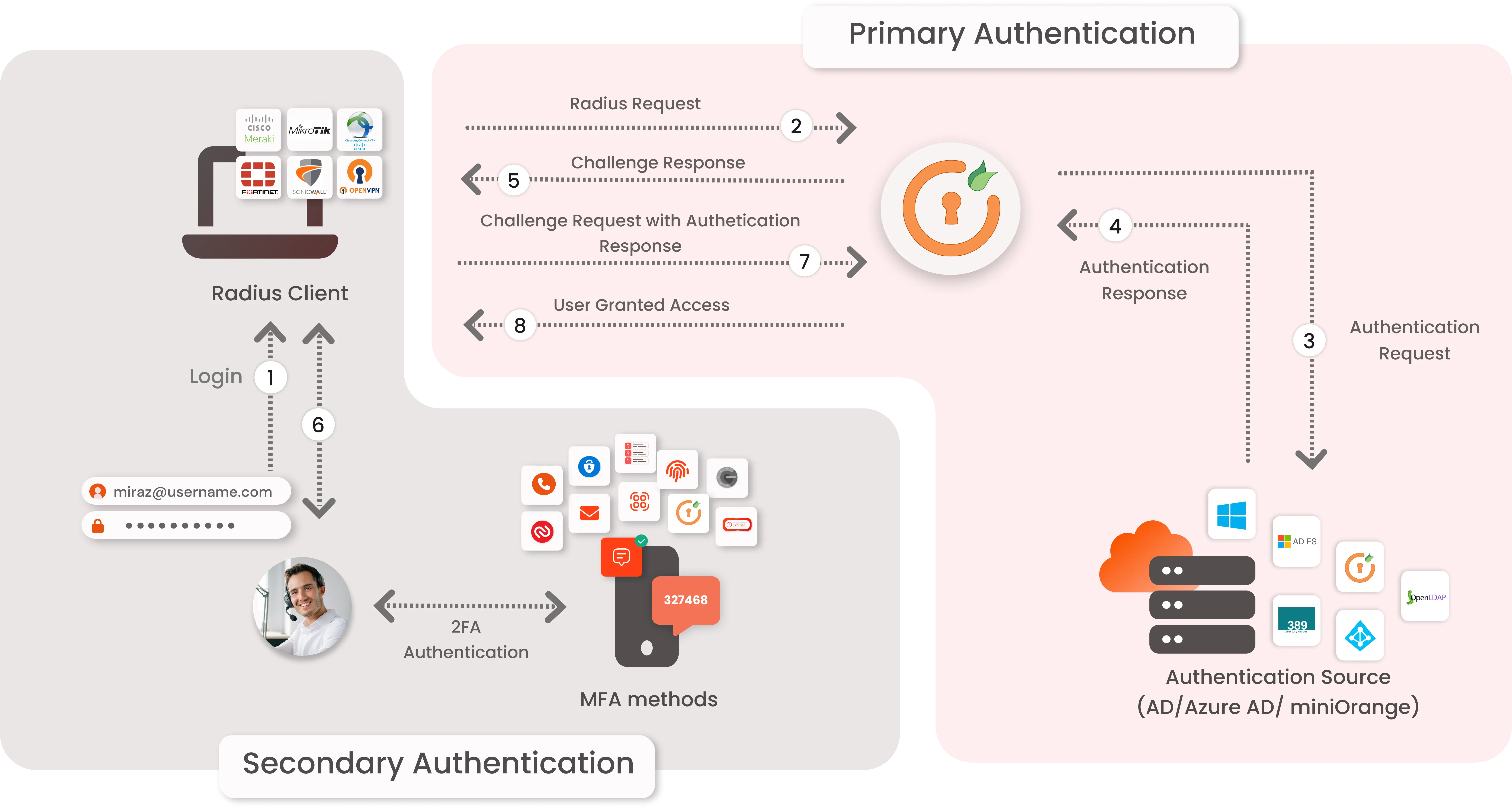
miniOrange provides user authentication from various external directories such as miniOrange Directory, Microsoft AD, Microsoft Entra ID/LDAP, AWS Cognito and many more.
Can't find your Directory? Contact us on idpsupport@xecurify.com
miniOrange offers free POC and help through a consultation call with our System Engineers to Setup Two-Factor Authentication for Fortinet Fortigate SSL VPN in your environment with 30-day trial.
For this, you need to just send us an email at idpsupport@xecurify.com to get free POC and we'll help you setting up our solution in no time.
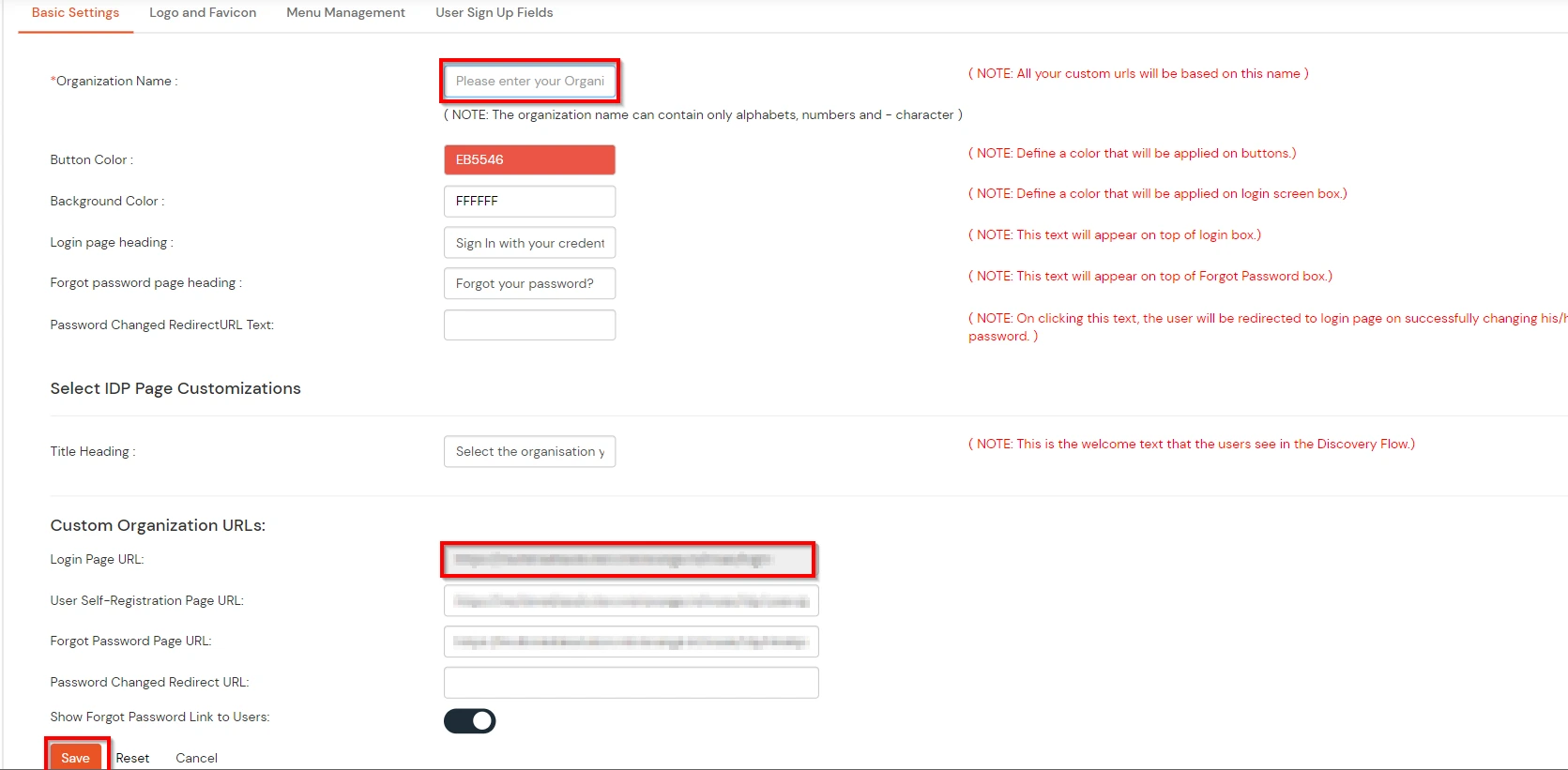


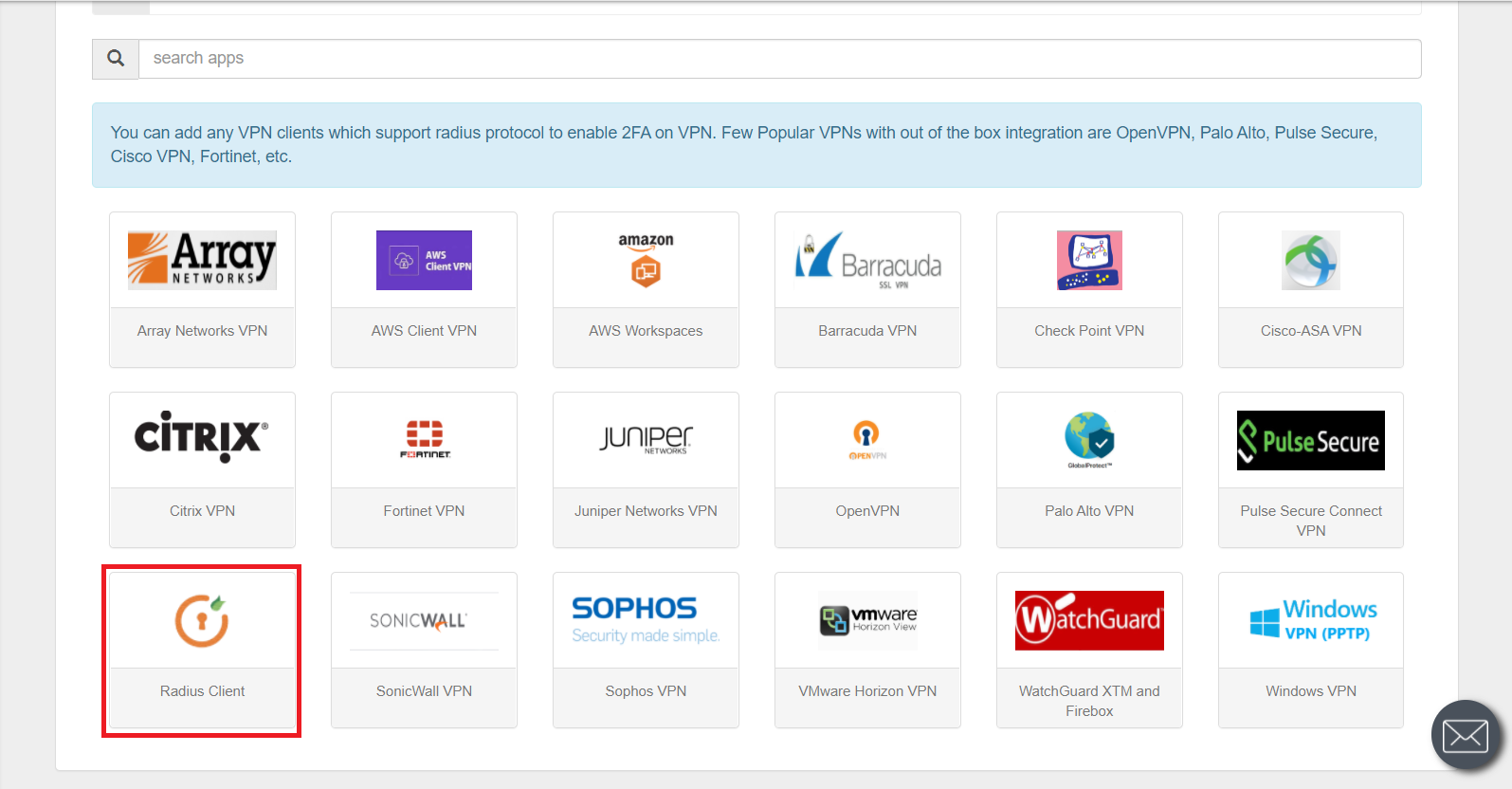
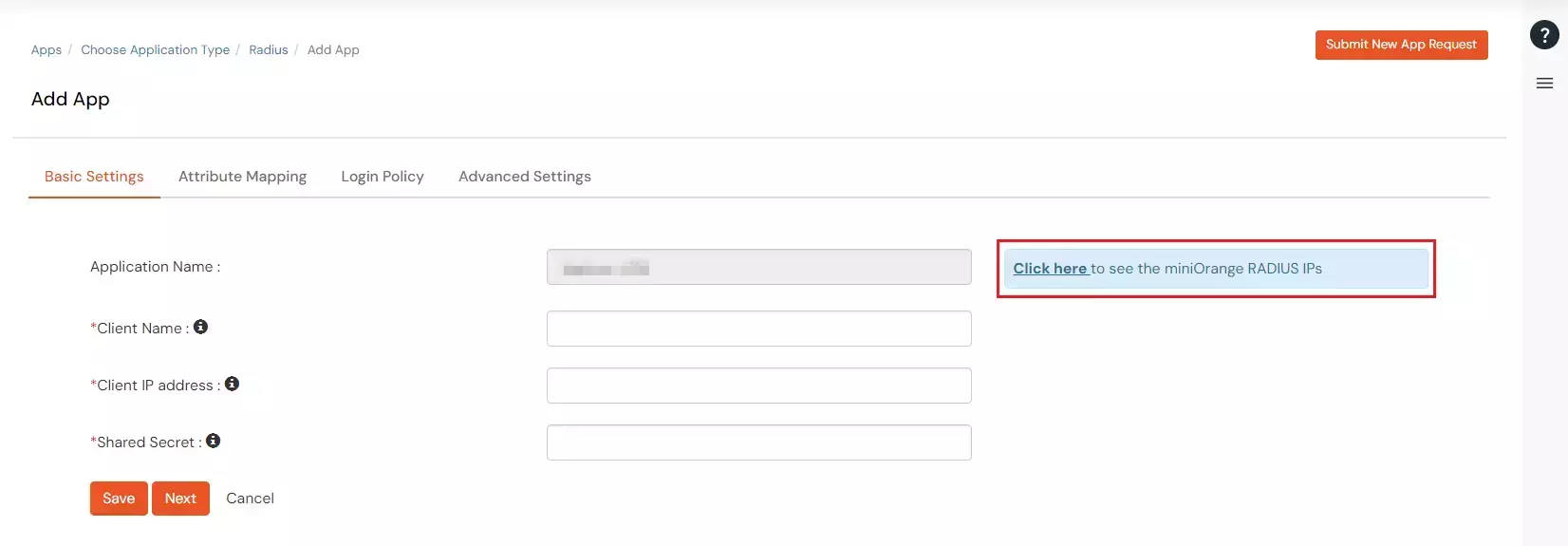


| Client Name: | Any name for your reference. |
| Client IP: | IP address of VPN server which will send Radius authentication request. |
| Shared Secret: | Security key. For Eg. "sharedsecret" (Keep this with you, you will need to configure same on VPN Server). |

| Vendor Name | Group Attribute | Vendor ID | Vendor Attribute ID |
|---|---|---|---|
| Cisco ASA VPN | 26 Vendor-Specific | 3076 | 25 |
| Fortinet VPN | 26 Vendor-Specific | 12356 | 1 |
| Palo Alto VPN | 26 Vendor-Specific | 25461 | 5 |
| SonicWall VPN | 26 Vendor-Specific | 8741 | 3 |
| Citrix VPN | 26 Vendor-Specific | 66 | 16 |
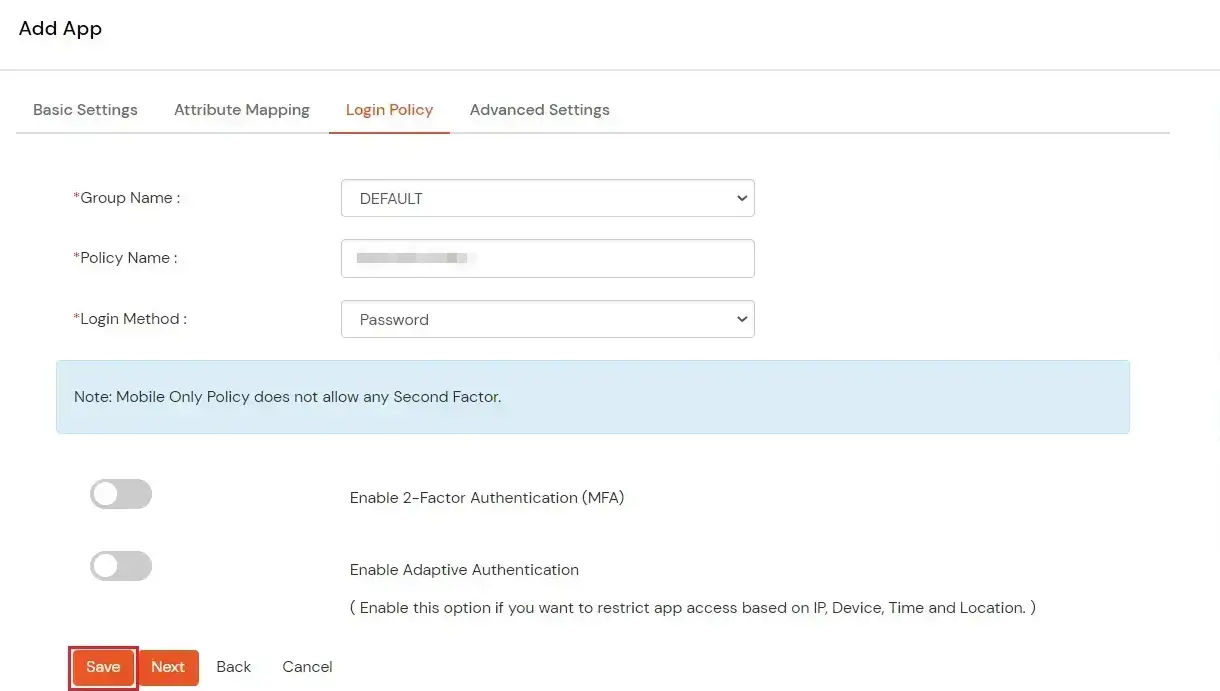
| Group Name: | Group for which the policy will apply. |
| Policy Name: | Any Identifier that specifies policy name. |
| Login Method | Login Method for the users associated with this policy. |
| Enable 2-Factor Authentication | Enables Second Factor during Login for users associated with this policy. |
| Enable Adaptive Authentication | Enables Adaptive Authentication for Login of users associated with this policy. |
Only For On-Premise Version
Open Firewall Ports.
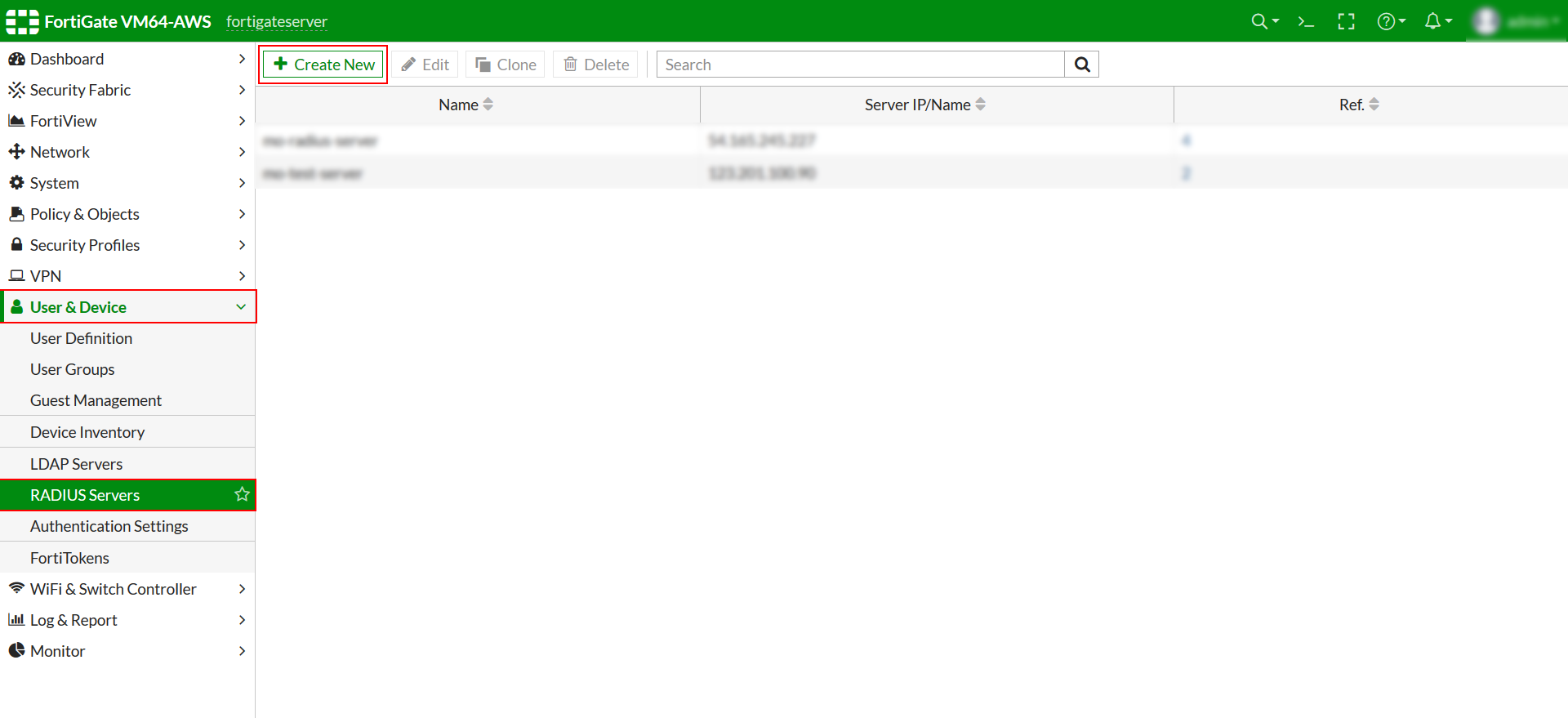
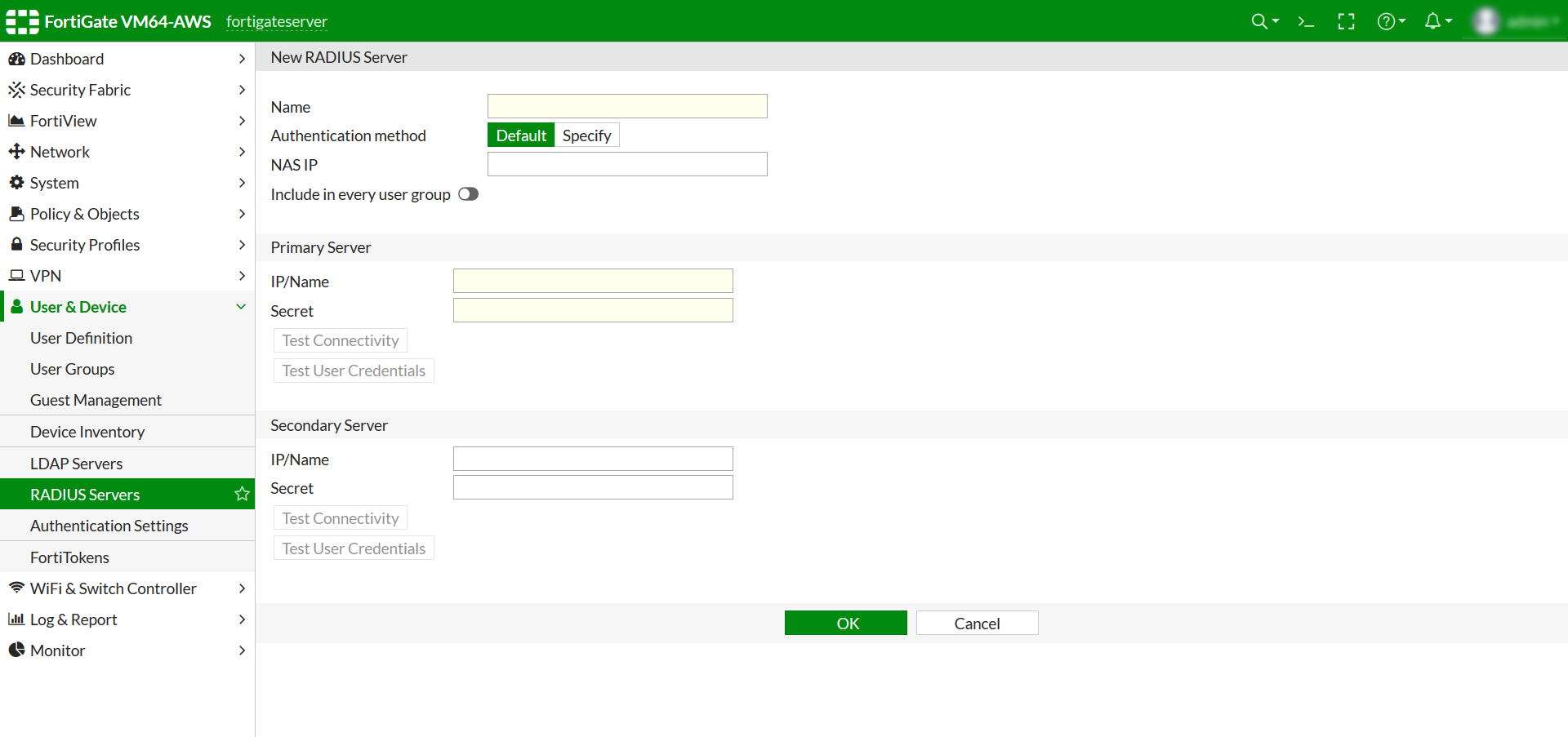
| Name: | Appropriate name.Eg: mo-radius-server |
| Authentication Method: | Click on Specify and then select PAP in the Dropdown. |
| Primary Server IP / Name: | For on-premise version: IP of server where IDP(miniOrange) is installed
For cloud version: Use the Radius Server IPs which you got from Step1. |
| Primary Server Secret | Secret Key for the Fortinet (RADIUS) App defined in step 1 |
| Secondary Server IP / Name: | Optional |
| Secondary Server Secret | Optional |

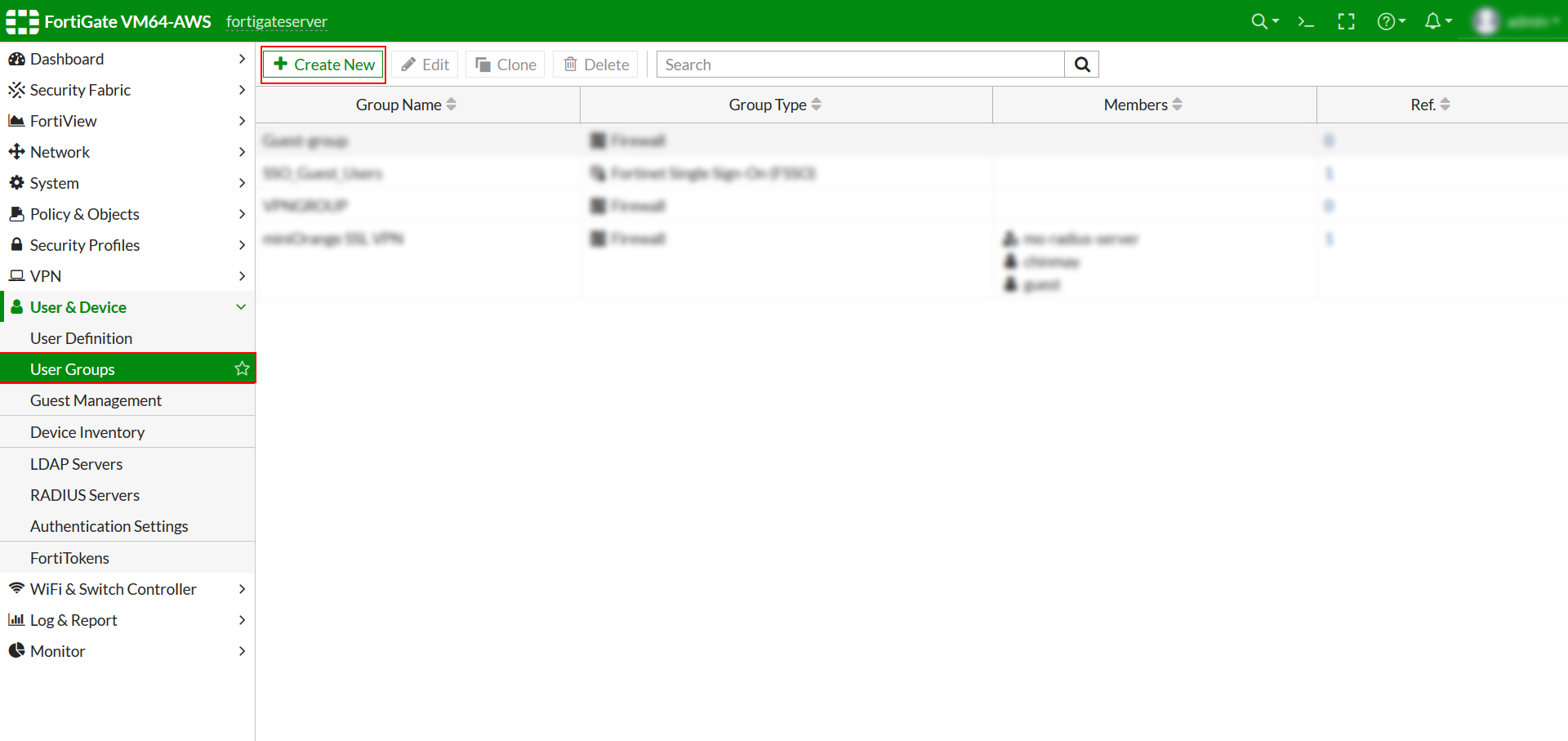

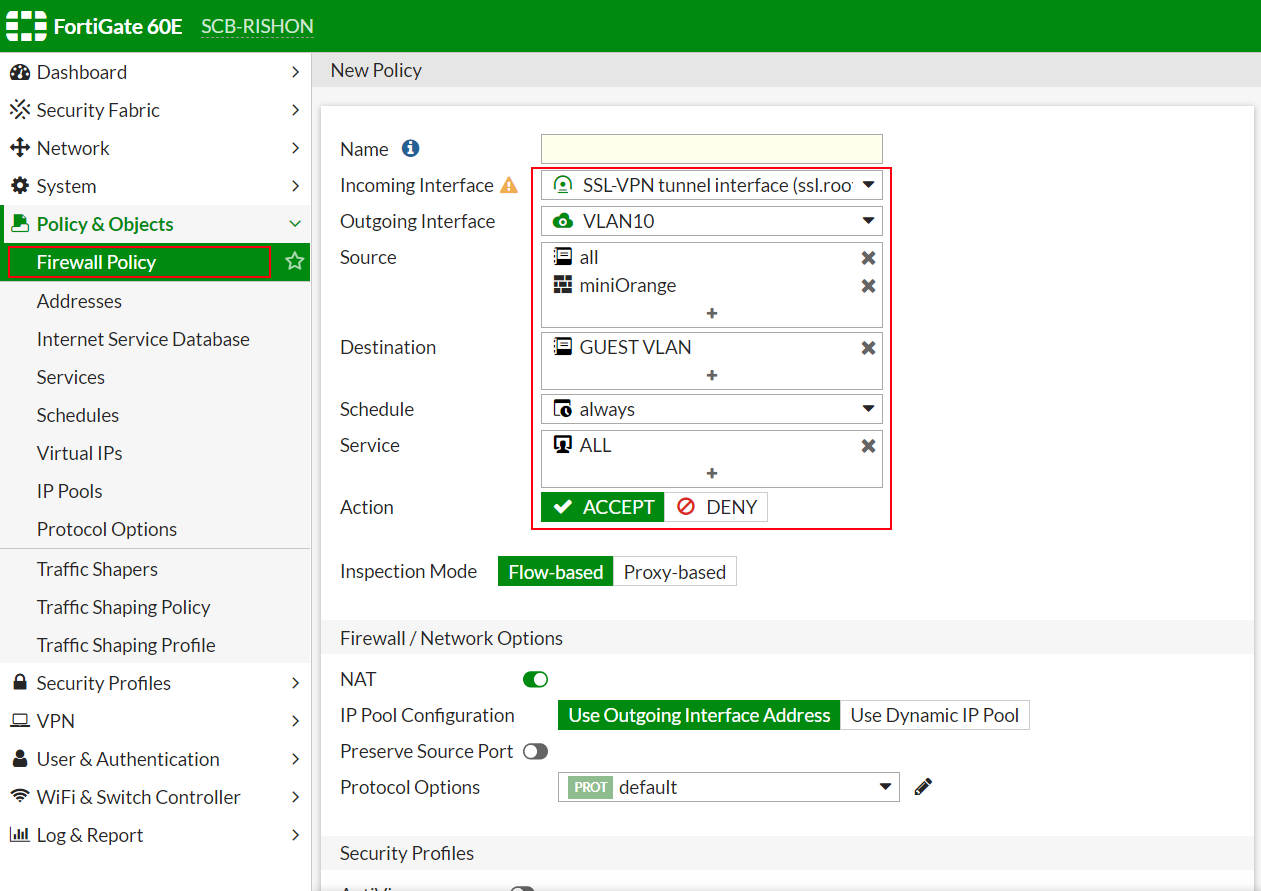
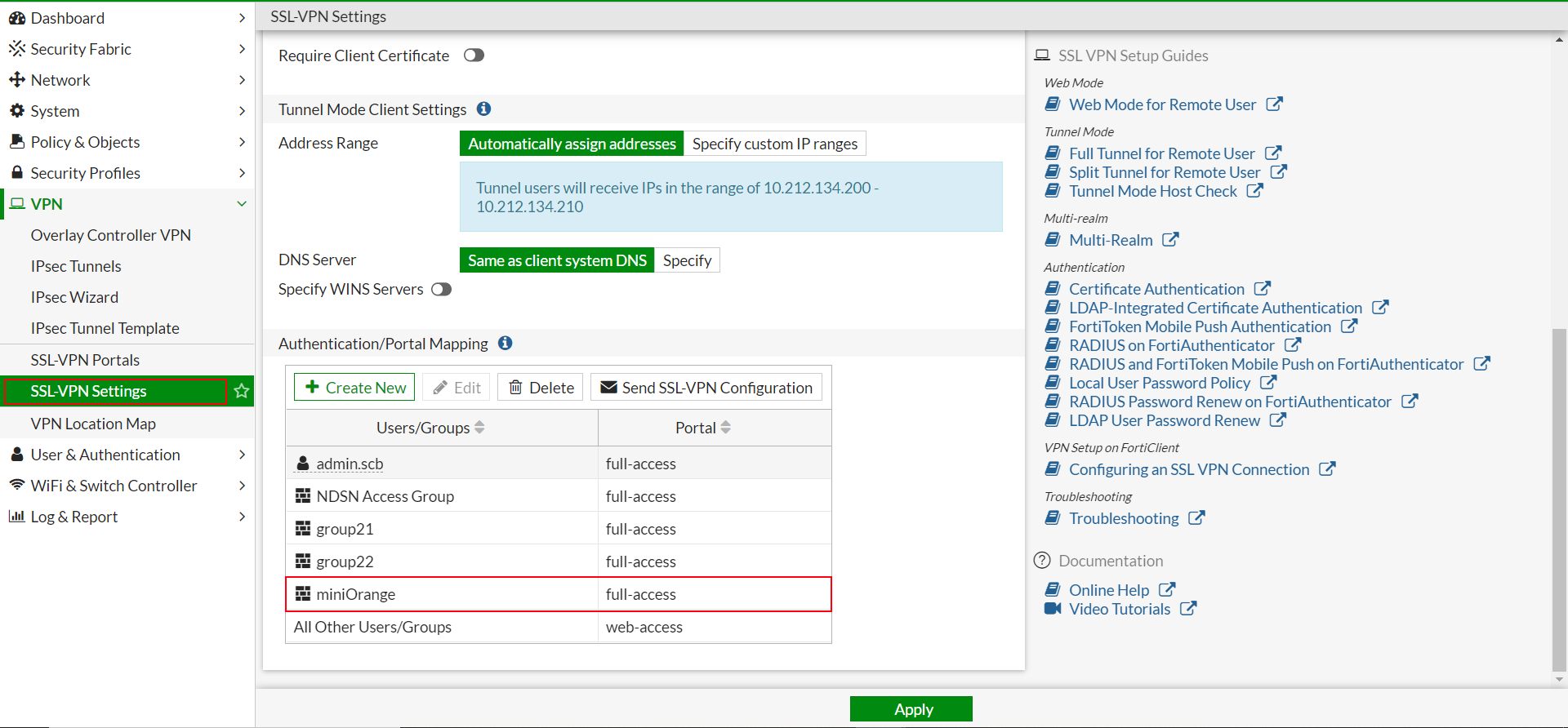
miniOrange provides user authentication from various external sources, which can be Directories (like ADFS, Microsoft Active Directory, Azure AD, OpenLDAP, Google, AWS Cognito etc), Identity Providers (like Okta, Shibboleth, Ping, OneLogin, KeyCloak), Databases (like MySQL, Maria DB, PostgreSQL) and many more. You can configure your existing directory/user store or add users in miniOrange.
Configure your existing directories such as Microsoft Active Directory, Azure, OpenLDAP, etc.



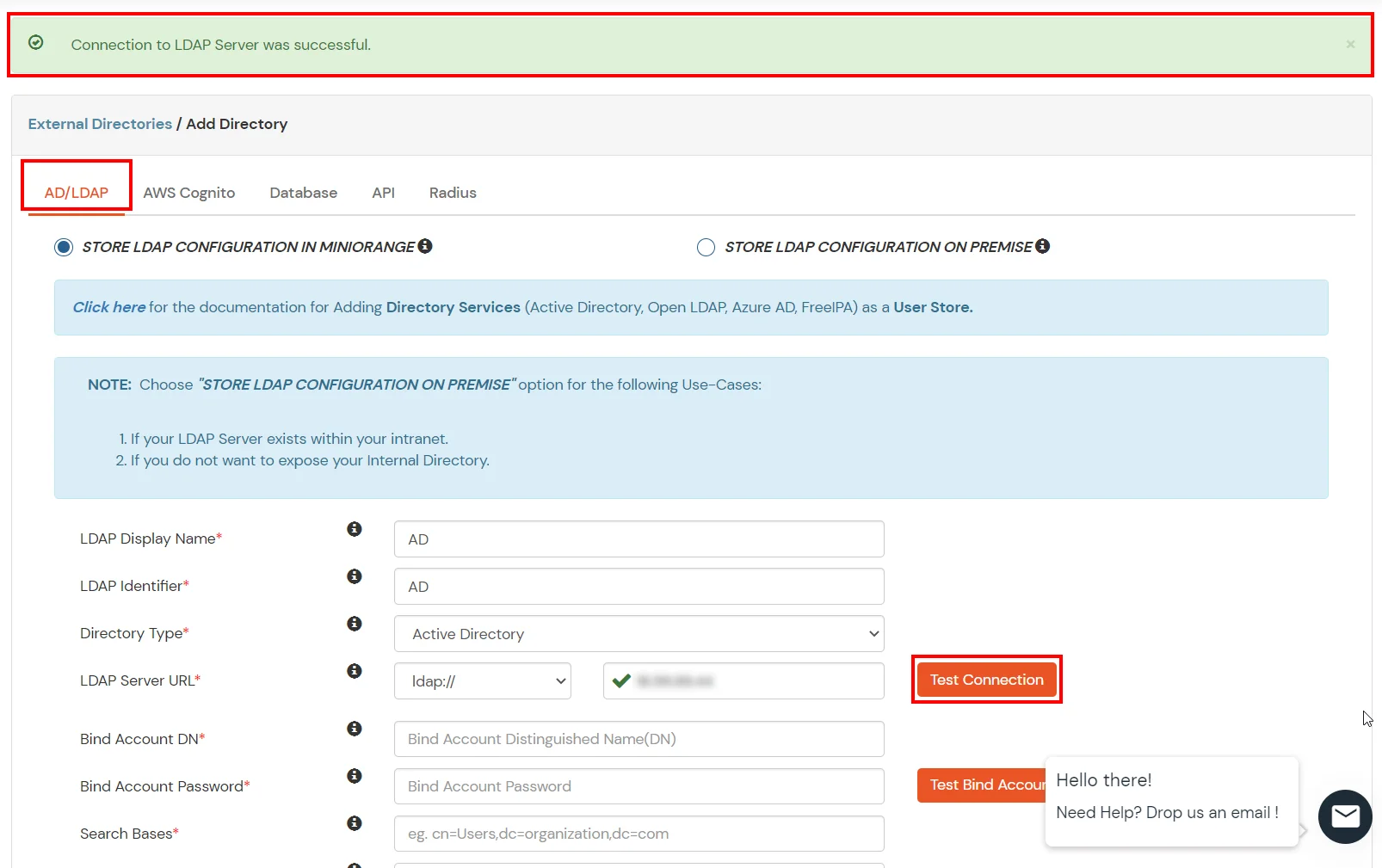





Here's the list of the attributes and what it does when we enable it. You can enable/disable accordingly.
| Attribute | Description |
|---|---|
| Activate LDAP | All user authentications will be done with LDAP credentials if you Activate it |
| Sync users in miniOrange | Users will be created in miniOrange after authentication with LDAP |
| Fallback Authentication | If LDAP credentials fail then user will be authenticated through miniOrange |
| Allow users to change password | This allows your users to change their password. It updates the new credentials in your LDAP server |
| Enable administrator login | On enabling this, your miniOrange Administrator login authenticates using your LDAP server |
| Show IdP to users | If you enable this option, this IdP will be visible to users |
| Send Configured Attributes | If you enable this option, then only the attributes configured below will be sent in attributes at the time of login |
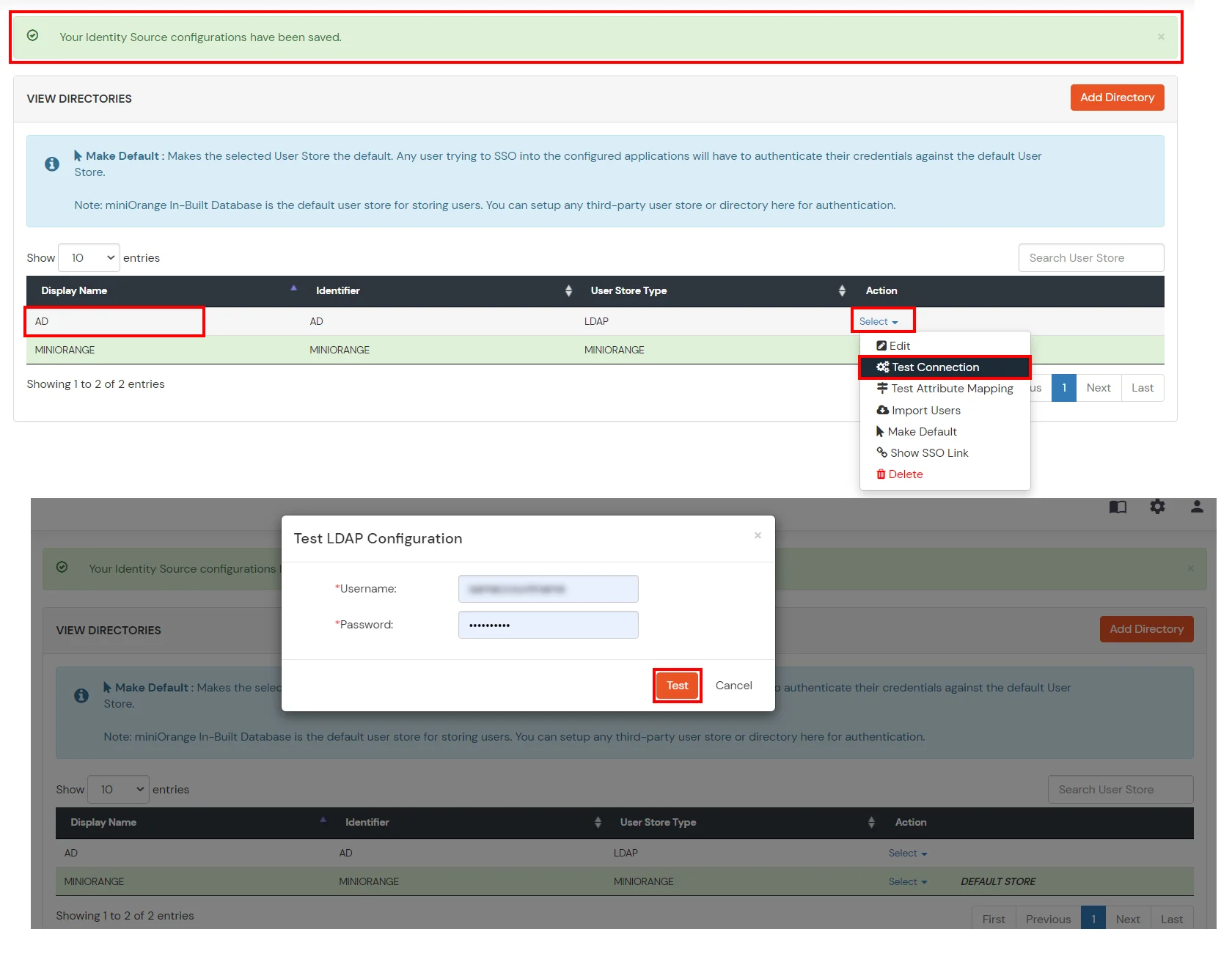


Refer our guide to setup LDAPS on windows server.
Note: Below steps are used to enable one time or manual sync. To enable sync on scheduled basis, you should use LDAP gateway module. Read more and download the LDAP gateway module.




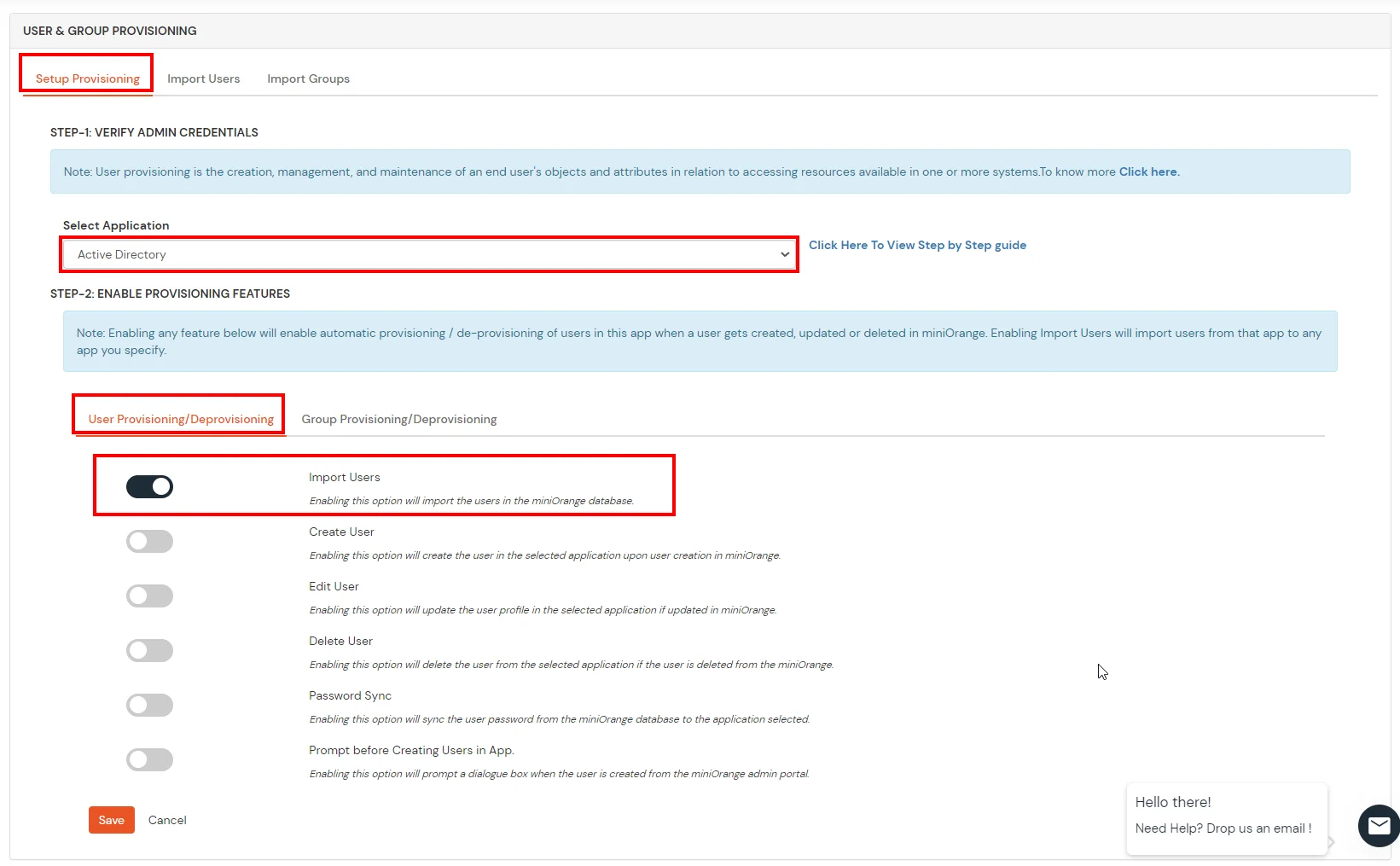


1. Create User in miniOrange





2. Bulk Upload Users in miniOrange via Uploading CSV File.







(The Active Directory Group Provisioning (Sync) setup is done. Now, whenever a user is created or modified in LDAP server and if the Assign Users to groups is enabled, then user group attribute from the LDAP server will be automatically synced and the user group will be assigned or changed accordingly in miniOrange.)
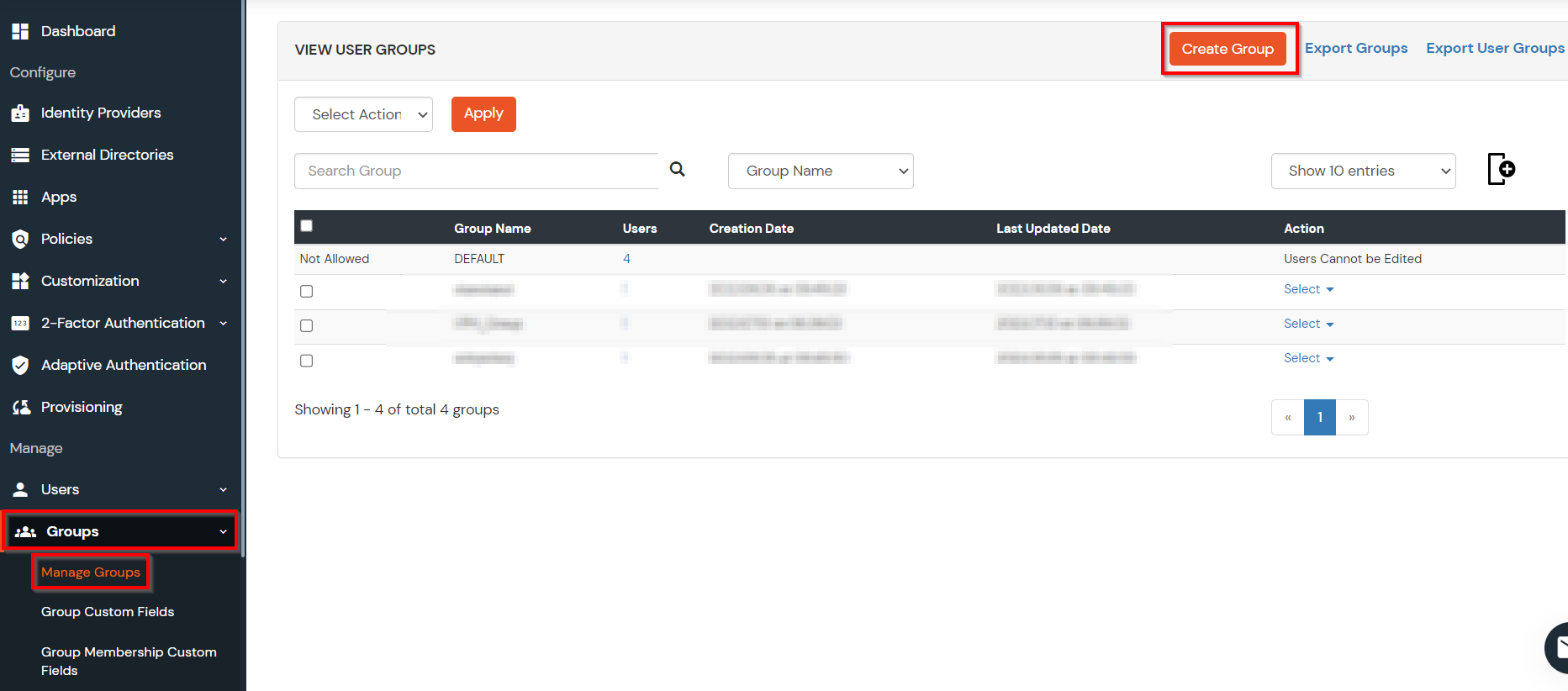



Note: You can follow this guide, if you want to customize and enroll 2FA for end users.
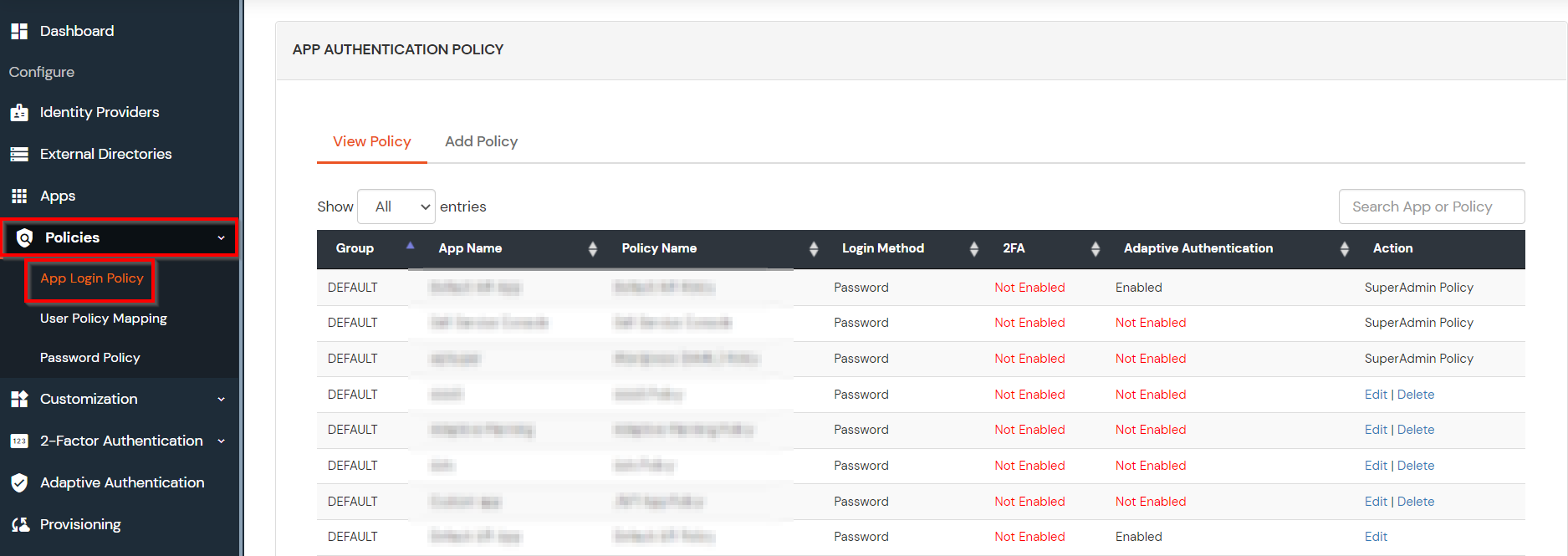
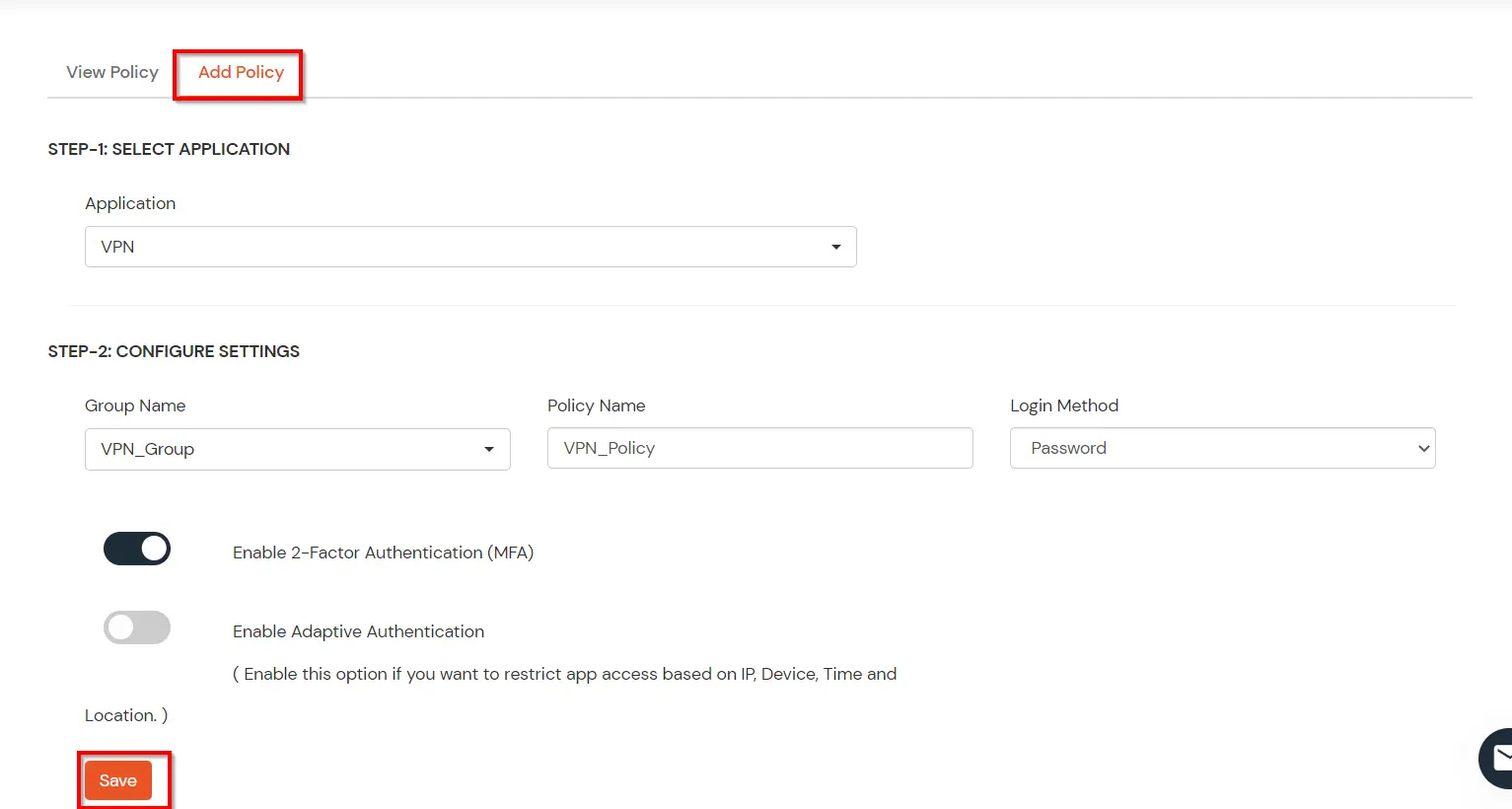
With the help of this guide you will be able to configure Two-Factor Authentication (2FA) for Fortinet Fortigate SSL VPN Login.


Yes, Fortinet supports Two-Factor Authentication (2FA) but limited to few features, Integrating miniOrange can enhance security by offering additional authentication methods.
Two-factor authentication in FortiGate VPN, provided by miniOrange, is a security measure where users must provide two forms of identification - their credentials and an authentication code - to access the Fortinet Fortigate SSL VPN.
To set up 2FA on FortiGate, you integrate it with miniOrange, which acts as a RADIUS server. This setup enhances security by requiring users to provide two authentication factors - their usual username and password, and an additional authentication code.
Steps to Configure 2FA or MFA in SSL VPN FortiGate -
FortiGate SSL VPN default timeout is 5 seconds, which is insufficient while setting up 2FA, we have to reconfigure the timeout to 30 seconds.
miniOrange supports multiple 2FA/MFA authentication methods for Fortinet Fortigate SSL secure access such as, Push Notification, Soft Token, Microsoft / Google Authenticator etc.
| Authentication Type | Method | Supported |
|---|---|---|
| miniOrange Authenticator | Soft Token | |
| miniOrange Push Notification | ||
| Mobile Token | Google Authenticator | |
| Microsoft Authenticator | ||
| Authy Authenticator | ||
| SMS | OTP Over SMS | |
| SMS with Link | ||
| OTP Over Email | ||
| Email with Link | ||
| Call Verification | OTP Over Call | |
| Hardware Token | YubiKey Hardware Token | |
| Display Hardware Token |

Our Other Identity & Access Management Products